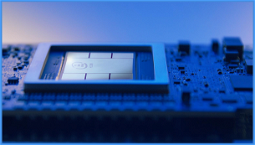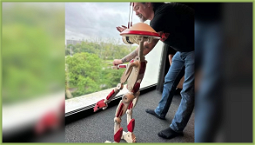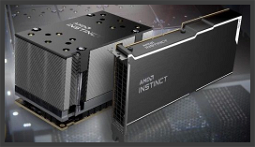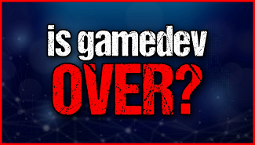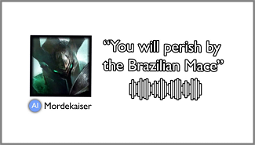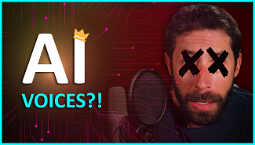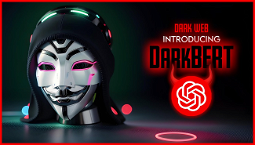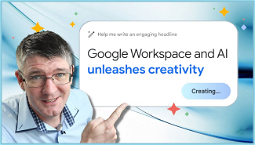The presentation given by Tinybuild CEO Alex Nichiporchik on the potential use of AI to monitor employees has been met with criticism, with many suggesting that the concept is dystopian and that it presents a serious threat to workers. Nichiporchik himself clarifies that the presentation was intended to highlight potential good and bad uses of AI, and that Tinybuild does not use any of the tools for HR.
Clarifying the Presentation
In a blog post on Medium, Nichiporchik describes the presentation given at the AI Summit in Amsterdam earlier this month. He clarifies that the presentation was intended to draw attention to the potential applications of AI tools to monitor employee behavior and to illustrate an optimistic view of AI versus a dystopian one.
“The talk was about contrasting an optimistic view of AI tools with a very dystopian one,” Nichiporchik writes. “The observation of self-centered language was a personal observation in meetings and not a tool for monitoring employees.”
Nichiporchik describes hypothetical scenarios in which AI tools could be used to monitor employee communications, such as Slack and Google Meet. He suggests that such communications could be processed through ChatGPT, an AI-based tool that analyzes the frequency of words and phrases used in conversations.
In particular, Nichiporchik observes that a frequent use of words and phrases indicating self-centeredness, such as “I” and “me,” could indicate toxic behavior. He also discusses a hypothetical scenario in which a person who excessively talks or types during meetings is observed to be toxic and may be contributing to burnout in others.
“AI combined with conventional HR tools could help identify employees at risk of burnout and address the issue before it becomes a problem,” Nichiporchik writes. “This could be done by shifting the focus from punishing the toxic employee to giving them the help and support they need to improve.”
He acknowledges that the concept may be considered dystopian and emphasizes its effectiveness. In one example, Nichiporchik shares that the system helped discover a studio lead who was struggling, and likely would have caused the studio’s downfall if left unaddressed.
“This approach absolutely works,” Nichiporchik writes. “Maybe we wouldn’t want to work in a place that uses these tools for HR, but I can’t deny that they work.” However, Nichiporchik clarifies that Tinybuild does not use any of these tools for HR and he wouldn’t want to work in a place that does.
Addressing Concerns
Many readers reply with concerns about the idea of being monitored by AI and the potential consequences for their employment. In response, Nichiporchik again clarifies that the systems he described are hypothetical and not actually in use at Tinybuild, and that the purpose of his talk was to contrast an optimistic view of AI tools with a more negative one.
“To be clear, Tinybuild does not use any of these tools for HR and would never want to,” Nichiporchik writes. “I made it clear that they are not being used at Tinybuild and would never be, but I would still call it irresponsible to not mention the potential impact of the technology on our industry.”
In another reply, Nichiporchik describes the “time vampire” slide as a poor choice, as it may have been interpreted as referring to employees who excessively talk or type during meetings. He clarifies that his intention was to highlight behavior that can lead to burnout, such as a person who is toxic by talking too much during meetings.
Nichiporchik also reiterates the connection between toxic behavior and burnout, stating that toxic behavior often stems from issues at work and can contribute to burnout. “A lot of toxic behavior is caused by burnout,” Nichiporchik writes. “That’s why we take the issue very seriously and take steps to prevent it.”
Nichiporchik emphasizes the importance of a positive work environment, especially in remote teams, to prevent burnout. In particular, he describes a scenario in which a large part of the studio’s leadership team was affected by burnout and toxicity and required more oversight, ultimately leading to the creation of a new role. The studio lead mentioned in the presentation remains on extended leave and will be assigned to a new project upon their return.
No Implementation of AI Systems
Despite the controversy, Nichiporchik reiterates that Tinybuild will not be implementing the AI systems described in the presentation. “We will not be using any of the tools described in the presentation,” Nichiporchik writes. “I made it clear that Tinybuild does not use any of these tools for HR and I wouldn’t want to work in a place that does.”
In a separate tweet, Nichiporchik announces that a video of the presentation will be uploaded to YouTube for those who would still like to view it.


